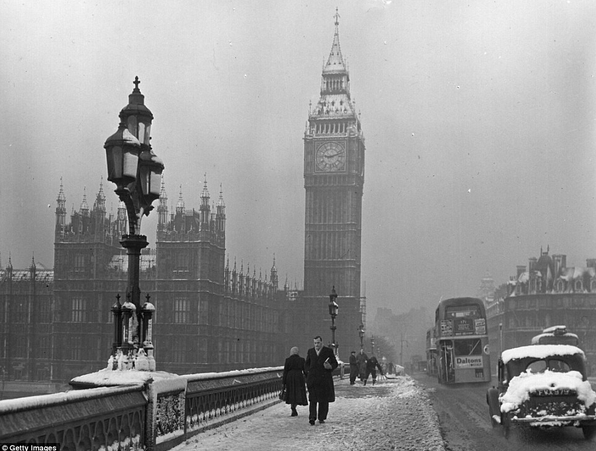A further problem is that setting day-to-day limits is a local matter.
另一個問題是,每日的平均濃度限值是由當地定制的。
So, not only do they rarely take long-term risk into account, they also vary from place to place.
所以,這些標準不僅很少考慮長期風險,而且每個地區的標準都不盡相同。
In Britain’s index a concentration of NO2 up to five times the WHO’s annual average limit counts as “low”.
根據英國的空氣質量指數,二氧化氮濃度高達世界衛生組織年平均濃度限值的5倍時才能算作 “差”。
America is more conservative.
美國相對謹慎些。

It draws the line at two-and-a half times the WHO limit.
他們把該值定在WHO限值的2.5倍。
Worse, in some cases there is no pretence of objectivity.
更糟的情況是,部分地區連客觀現實都懶得粉飾了。
The website of Belgium’s BelATMO index, for example, warns that this is “a qualitative representation” of air quality that “has little scientific meaning”.
例如,比利時的BelATMO空氣質量指數網站上,就有警告說世界衛生組織的年平均濃度限值僅僅是空氣質量的一種 “定性描述”,而且 “科學意義不大”。
Cities also vary in the way they present pollution data.
每個城市呈現空氣污染數據的形式也各不相同。
Most do so on a scale of ten or 100, which is then segmented into four to six bands labelled low, moderate and so on.
大多數城市采用了十分制或百分制,將其劃分成四到六個層次,分別代表著低質量、中等質量等等。
Some places draw the line between “low” and “moderate” at the level at which pollution starts to cause immediate health effects, reserving the red band for smog that severely affects most people.
在一些地方,以空氣污染程度能否對人體健康造成迅疾危害來區分空氣質量“低”和“中等”,等到幾乎所有人都受到霧霾嚴重影響的時候才顯示紅色警告。
Others divide the scale into equal chunks, each representing the same additional daily risk of dying or being admitted to hospital because of pollution.
另外一些地區把空氣污染等級均勻劃分,每增加一級,空氣污染造成的日死亡風險或者住院率相同增長。
Offcial indices also fail to capture patterns of variation within a day.
官方的空氣質量指數也未能表現出一天之內的空氣質量變化模式。
These can be important—and people might be able to modify their behavior if they understood them.
而這一變化模式十分重要,如果人們能明白這種模式,他們可能就會據此調整自己的生活習慣。
Our analysis suggests, for example, that Parisians who head out for work at 9am and return at 6pm could reduce their average daily commuting intake of NO2 by 16% by travelling both ways an hour earlier.
舉個例子,我們的分析表明,在巴黎,上午9點出門上班并且下午6點下班回家的人,如果往返都提前一個小時,那么他們日常通勤時吸入的二氧化氮可以減少16%。
Going two hours earlier would cut the intake by 28%.
如果提前兩個小時,他們吸入的二氧化氮則會相比減少28%。
Weekly cycles also exist.
每周空氣質量變化也有規律可循。
Parents in Brussels and Paris might be wise to schedule their children’s indoor activities, such as swimming lessons, on Saturdays and outdoor stuff like football practice on Sundays.
在布魯塞爾和巴黎,明智的家長會把孩子游泳課程這樣的戶內活動安排在周六,把踢足球訓練之類的戶外活動安排在周日。
That is because, during daytime hours, the concentration of NO2 in those cities was, on average, about 20% lower on Sundays.
這是因為在這兩個城市的白天時段,平均下來周日的二氧化氮濃度要低大約20%,
In Amsterdam it was 16% lower.
在阿姆斯特丹則會低16%。
In all three places, fine-particle pollution also fell on Sundays, as did ozone in the summer months.
在這三個地方,周日的細微顆粒物污染也更少,就好像在夏季臭氧濃度也會減少一樣。
The best pollution advice of all to people in these cities, though, is: move to America.
然而關于空氣污染這一問題,給這三座城市的居民最好的建議是:搬到美國去。
In New York, levels of NO2 were 20% below the WHO limit, and that is pretty typical of places in the United States, where diesels are less common than in Europe.
在紐約,二氧化氮濃度比世界衛生組織的標準低20%,這是美國的一典型,因為這里的柴油機比歐洲少得多。
As the inscription under the Statue of Liberty has it, “Give me your huddled masses, yearning to breathe free.”
就像自由女神底下的銘文說的那樣:“讓你那擠成一團的人民過來這里,他們渴望自由呼吸。”
翻譯:木頭











